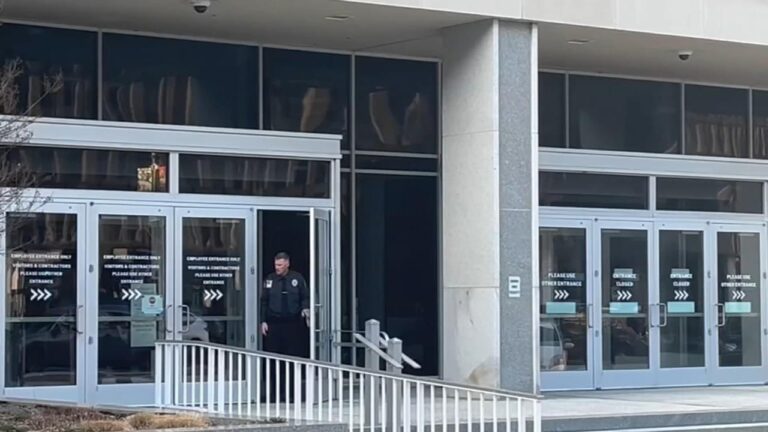Illinois Education Budget Reductions: Navigating Challenges and Seeking Solutions
Statewide Education Funding Cuts Reshape Illinois Schools
Illinois is currently confronting substantial budget reductions within its Department of Education, compelling school districts across the state to make tough choices that could significantly alter the educational environment. Vital programs, including special education and extracurricular activities, face potential downsizing as administrators strive to manage diminishing financial resources. Teachers’ unions have raised alarms about possible staff shortages, which may lead to larger class sizes and compromise the quality of instruction. Both educators and families are increasingly concerned about the long-term effects on student success and the equitable distribution of resources between urban and rural schools.
Immediate repercussions of these budget cuts include:
- Scaling back after-school and enrichment programs that many students depend on for academic support and engagement.
- Postponement of investments in classroom technology, slowing efforts to enhance digital learning environments.
- Hiring freezes and salary stagnation for teachers, exacerbating instability in already pressured school settings.
| Funding Area | Pre-Cut Budget | Projected Post-Cut Budget |
|---|---|---|
| Special Education | $500 million | $375 million |
| Support Staff Positions | 2,500 | 1,800 |
| Technology Upgrades | $45 million | $20 million |
Consequences for Educators and Students Spark Widespread Concern
The recent layoffs and budget constraints have sent shockwaves through Illinois classrooms, affecting both teachers and students. Educators, already adapting to the challenges of post-pandemic education, now face job insecurity and the loss of experienced colleagues. This disruption threatens staff morale and the continuity of quality instruction, as veteran teachers play a crucial role in mentoring newcomers and sustaining educational programs.
Students are also confronting a more uncertain academic environment, with rising class sizes and diminished access to specialized support. Districts report an increase in student-to-teacher ratios, a factor linked by numerous studies to lower academic achievement and reduced personalized attention. Parents and advocacy groups have voiced several pressing concerns:
- Decreased availability of special education resources
- Fewer extracurricular and enrichment opportunities
- Increased risk of teacher burnout and turnover
| Metric | Before Layoffs | After Layoffs |
|---|---|---|
| Average Class Size | 22 students | 29 students |
| Special Education Support Staff | 15 per district | 9 per district |
| Teacher Retention Rate | 88% | 74% |
Urgent Calls for Prioritizing Education Funding to Bridge Growing Gaps
The budget cuts have ignited urgent appeals from educators and community advocates for state leaders to prioritize education funding. With financial support falling below previous levels, schools are struggling to maintain essential classroom resources, retain qualified teachers, and provide critical student services. Programs designed to reduce achievement disparities are particularly vulnerable, risking an expansion of educational inequities across Illinois.
- Scaling back after-school tutoring and summer learning programs
- Increasing class sizes due to hiring freezes and staff reductions
- Delaying upgrades in technology and special education support
| Focus Area | Anticipated Impact |
|---|---|
| Low-Income School Districts | Exacerbated shortages of essential resources |
| Teacher Workforce | Increased turnover and recruitment challenges |
| Student Performance | Widening achievement gaps on standardized assessments |
Expert Recommendations for Strategic Investments to Strengthen Illinois Education
In response to the funding shortfalls, education experts and policymakers are advocating for targeted investments to stabilize Illinois schools and safeguard student outcomes. The current budget constraints have raised alarms about resource depletion, hiring freezes, and growing class sizes that threaten to diminish educational quality statewide. Experts warn that without prompt and focused funding, the repercussions could be profound and enduring, affecting academic success and the overall health of school communities.
Key strategies proposed include:
- Allocating funds for essential classroom supplies and technology enhancements
- Implementing programs to improve teacher retention and reduce burnout
- Expanding mental health and counseling services for students and staff
- Upgrading school infrastructure to create safe, modern learning environments
| Investment Area | Current Challenges | Recommended Funding |
|---|---|---|
| Classroom Materials | Insufficient supplies and outdated learning tools | $50 million |
| Staffing | Hiring delays and loss of veteran educators | $75 million |
| Student Support Services | Limited access to counseling and health programs | $40 million |
| Facilities and Technology | Obsolete infrastructure and equipment | $60 million |
Charting a Path Forward for Illinois Education
As the Illinois Department of Education enacts staffing reductions amid tightening budgets, uncertainty looms for educators, students, and families statewide. While the full scope of these changes is still unfolding, stakeholders emphasize the necessity of transparent communication and strategic planning to minimize disruption. The department’s capacity to effectively manage these challenges will be critical as communities across Illinois seek reassurance and stability in their public education system.





